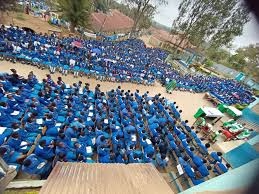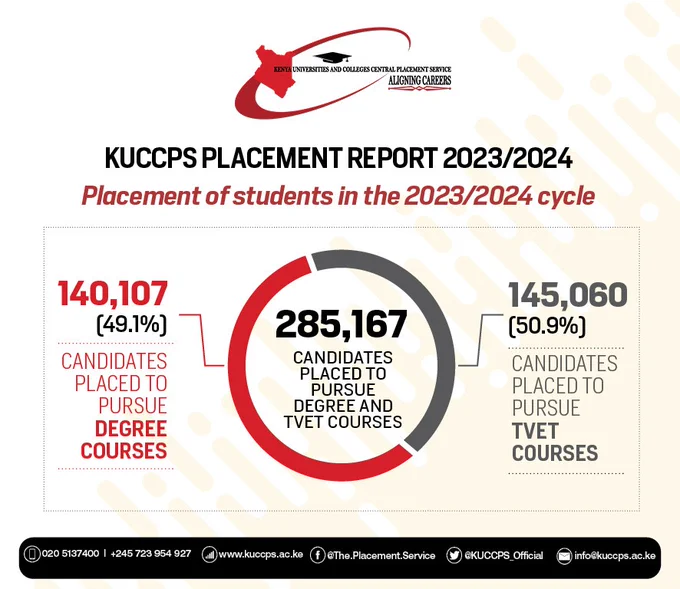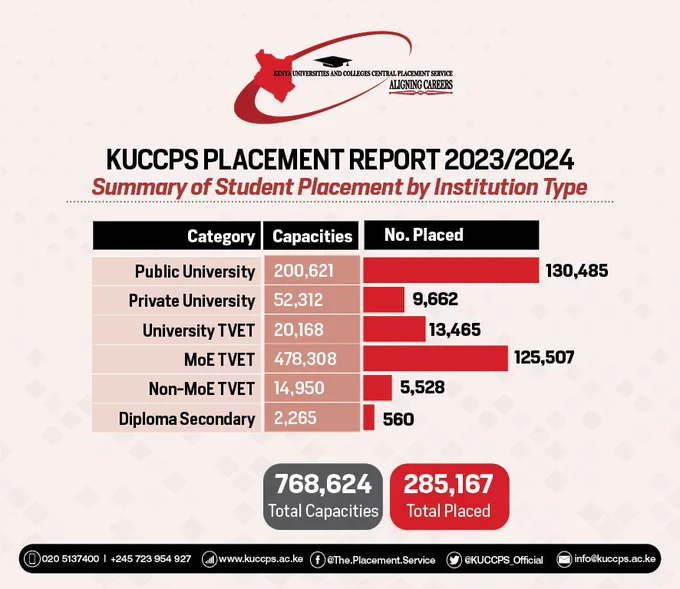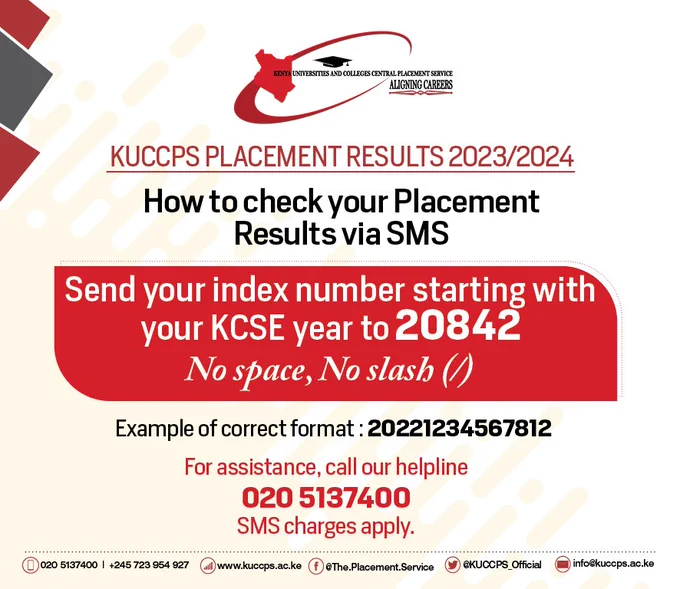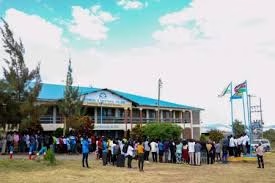CHRISTIAN RELIGIOUS EDUCATION (313)
4.10.1 Christian Religious Education Paper 1 (313/1)
- (a) The poetic books in the Bible
(i) Job
(ii) Psalms
(iii) Proverbs
(iv) Ecclesiastes
(v) Song of Solomon.
5×1 5 marks
(b) Translation of the Bible from the original languages to local languages
(i) The Old Testament was originally written in Hebrew.
(ii) The New Testament was originally written in Greek.
(iii) The Old Testament was translated from Hebrew into Greek.
(iv) The entire Bible was translated into Latin by Jerome.
(v) The Bible was translated directly from Hebrew and Greek into English by
William Tyndale.
(vi) The Bible was translated into national languages of European countries during
the period of Reformation.
(vii) It was translated from English into Kiswahili by Dr. Kraph.
(viii) The Bible has been translated into other local languages by the Bible Society of
Kenya/individuals.
4×2 8 marks
(c) Ways in which Christians use the Bible to spread the Gospel today.
(i) The Bible is the main source book for Christian sermons.
(ii) It is used in the writing of Christian literature.
(iii) The Bible is used when composing songs.
(iv) It is used in the production of Christian movies/videos/radio programs/plays.
(v) the Bible is used in swearing/taking of oath of allegiance.
(vi) It is used to organize Bible studies/teaching Sunday/Sabbath schools.
(vii) Verses from the Bible are used for imprints/posters.
(viii) The Bible is used in writing of doctrines for different denominations.
(ix) Biblical texts are used in teaching of Christian Religious Education.
(x) It is used to offer guidance and counselling.
7×1 7 marks
- (a) The incident when Abraham was willing to sacrifice his son Isaac.
(i) God told Abraham to take his only son to the land of Moriah/ to offer him as a
sacrifice.
(ii) Abraham took his son, two servants and wood for burnt offering.
425
(iii) They arrived at the place after a three day’s journey.
(iv) Abraham commanded his servants to remain behind as he and Isaac went up to
worship.
(v) He took Isaac, the firewood and the knife, and went up.
(vi) Isaac asked his father where the lamb for the offering would come from.
(vii) Abraham told Isaac that God would provided the lamb for a burnt offering.
(viii) When they arrived at the place God had commanded, Abraham built an altar.
(ix) He bound Isaac/laid him on the altar upon the wood.
(x) Abraham took the knife to slay his son but the angel of the Lord stopped him.
(xi) Abraham saw a ram, which he offered instead of his son.
(xii) He called the name of the place, The Lord will provide.
(xiii) The angle appeared to Abraham a second time and gave him promises because
of his obedience.
(xiv) Abraham returned with his men to Beersheba.
6×1 6 marks
(b) Differences between Jewish and traditional African practices of circumcision.
(i) In Jewish Community, circumcision is for male children only whereas in African
practices, it is for both male and female.
(ii) Among the Jews, circumcision is performed on babies of 8 days old whereas in
traditional African communities, it is done during adolescence stage.
(iii) In African communities, it is a test of courage, whereas in Jewish community, it
is a sign of covenant with God.
(iv) Circumcision in African communities is a communal practice whereas among
the Jews, only members of the immediate family participate.
(v) In traditional African communities, initiates take up responsibilities while
among the Jews, the initiates are too young to shoulder any responsibility.
(vi) In African communities, circumcision is carried out during specific seasons
while among the Jews, it is continuous.
4×2 8 marks
(c) Ways in which Christians Identity themselves in the society today.
(i) Christians wear specific designs of clothes.
(ii) They abstain from eating some kinds of food/taking some drinks.
(iii) By carrying/wearing the rosary/cross/the flag/badges/rings.
(iv) They have special ways of greetings/salutations.
(v) Through making personal testimonies/pronouncements.
(vi) By owning specific Bible versions/literature.
(vii) Through speaking in tongues.
(viii) Use of specific church designs.
(ix) Use of different titles/ names.
(x) Through ways in which they worship.
(xi) By residing in secluded homes/houses.
6×1 6 marks
426
- (a) Ways in which prophet Samuel promoted the worship of Yahweh in Israel.
(i) He prayed/interceded for the people.
(ii) He mediated between God and the Israelites.
(iii) He performed priestly duties/made sacrifices.
(iv) He condemned King Saul for disobeying God.
(v) He warned the elders of Israel against demanding for a political King/dangers of
rejection.
(iv) He condemned King Saul for disobeying God.
(v) He warned the elders of Israel against demanding for a political King/dangers of
(vi) He anointed kings over Israel.
(vii) He obeyed God’s command’s /instructions/was exemplary.
4×2 8 marks
(b) Effects of idolatry in Israel during the time of Prophet Elijah.
(i) God raised prophets to bring Israel back to the covenant way of life.
(ii) There was persecution/hostility/towards Yahweh’s people/prophets.
(iii) Bad prophets/prophetesses were brought to Israel.
(iv) There was corruption/social injustices/people rejected the covenant way of life.
(v) Israelites practiced Semitism mixed the worship of Yahweh with Baal.
(vi) There was drought in Israel for three years as a divine curse on the nation.
(vii) Israel lost its identity as a nation of God’s people.
(viii) A contest was held at Mount Carmel to prove who was the true God.
(ix) Elijah fled the country/was sustained by God’s power during the period of the
drought.
6×1 6 marks
(c) Lessons Christians learn about social justice from the story of Naboth’s vineyard.
(i) Christians should not use their position in leadership to acquire wealth
irregulary/falsely.
(ii) Christians should protect the poor against corrupt leaders.
(iii) They should safe guard property received through inheritance/according to the
law.
(iv) They should not be misled by their friends/relatives to go against the law.
(v) Christians should execute justice/protest rights/freedom of citizens.
(vi) they should condemn all forms of injustice in the society.
(vii) Christians should champion/fight for the rights of the weak in the society.
(viii) There is punishment for those who exploit the poor/others.
6×1 6 marks
- (a) Characteristics of false prophets in the Old Testament,
(i) False prophets did not have a divine call/raised themselves.
(ii) They spoke falsehoods/lies.
(iii) They prophesied out of their own minds/imaginations.
427
(iv) They prophesied what the people wanted to hear/according to circumstances.
(v) They misled people from the covenant way of life/promoted idolatry.
(vii) They hindered the work of true prophets.
(viii) They worked for material gain/paid for their services.
(ix) Their prophecies were not fulfilled.
6×1 6 marks
(b) The teaching of Prophet Amos on Israel’s election.
(i) Israel’s election was out of God’s own initiative/favour for them.
(ii) God delivered the Israelites out of bondage in Egypt.
(iii) He led them during the exodus.
(iv) He protected them in the wilderness.
(v) He defeated all their enemies.
(vi) God gave them special land to inherit.
(vii) God raised prophets among them to lead them in their religious life.
(viii) God was to punish the Israelites because of their disobedience.
6×1 6 marks
(c) Factors that hinder Christians from practicing their faith in God.
(i) Lack of role-models/mentorship.
(ii) Job commitment.
(iii) Social injustices.
(iv) Peer pressure.
(v) False teachings/different interpretation of the Bible.
(vi) Greed for power/wealth.
(vii) Permissiveness in society.
(viii) Science and technology.
(ix) Poverty/unemployment.
(x) Sickness/ill health.
(xi) Influence from mass media.
(xii) Cultural influence/Ethnicity/Racism.
(xiii) Gender bias.
(xiv) Generation gap.
8×1 8 marks
- (a) The measures taken by Nehemiah to restore the Jewish Community after the completion
of the wall of Jerusalem.
(i) Nehemiah organized for the Mosaic law to be read/interpreted to the people.
(ii) He led the Jews in the renewal/celebration of the Feast of Booths /Shelters.
(iii) The people fasted/held a national day of confession of their sins.
(iv) The covenant was sealed through signing of the agreement by Nehemiah/
leaders.
(v) He led the people in taking of an oath of obedience to the Mosaic law/
contribution towards the maintenance of the temple.
(vi) Nehemiah re-distributed the inhabitants of Jerusalem/the countryside.
428
(vii) He dedicated the walls /the gates of Jerusalem in a ceremonial procession.
(viii) Through the reading of the law, the Jews isolated themselves from the
foreigners.
(ix) Nehemiah cleansed the temple/brought back the Levites/singers to their
positions.
(x) He stopped traders from carrying out commercial activities at the temple gates
on the Sabbath day.
(xi) Nehemiah made the Jews take an oath not to marry children to foreigners.
7×1 7 marks
(b) Why Nehemiah introduced the Policy of separation of Jews from foreigners.
(i) Nehemiah wanted to keep the Jewish community pure.
(ii) The Jews were a minority group which needed to preserve their identity/culture.
(iii) Nehemiah wanted to separate/unite the Jews who returned from exile.
(iv) To solve conflicts over land ownership.
(v) Intermarriage would lead the Jews into idolatry.
(vi) The law of Moses was against association with foreigners.
(vii) Children born out of intermarriage could not speak the Hebrew language.
(viii) Religious reforms could not be effectively carried out.
4×2 8 marks
(c) Ways in which the government of Kenya supports church leaders in their work.
(i) The government gives financial/material assistance for development.
(ii) The government supports church-sponsored institutions.
(iii) By setting land aside for construction of church facilities.
(iv) The government allows freedom of worship.
(v) By availing facilities to host church workshops/seminars/conferences.
(vi) By including CRE in the curriculum.
(vii) By employing some of them as Chaplains in education institutions and in the
armed forces.
(viii) Organizing national prayer days.
(ix) Supporting leaders in conducting their charitable services.
(x) Through the development of the infrastructure.
(xi) The government has granted permission to the church to operate electronic/
media station.
(xii) The government recognizes the church calender.
5×1 5 marks
- (a) Causes of death in traditional African Communities.
(i) Curses
(ii) Witchcraft
(iii) Sorcery/magic
(iv) Breaking of taboos
(v) Failure to perform certain taboos
(vi) Breaking of an oath
(vii) Offending the ancestors
429
(viii) Natural calamity
(ix) Wars and raids.
6×1 6 marks
(b) Significance of rituals performed after the death of a person in traditional African
Communities.
(i) Wailing/crying is a sign of sorrow/announcing death.
(ii) Making sacrifices to appease the ancestors/deceased.
(iii) Prayers are made to ask the ancestors to accept the dead in the world of spirits.
(iv) Sharing of members of the bereaved family signify new life in the community.
(v) Singing and dancing depict anger towards death/in praise of the dead.
(vi) Washing/oiling of the body before burial shows respect to the departed .
(vii) Burying of the dead in the ancestral land shows that one is still a member of the
community.
(viii) Burying the dead with personal belongings symbolizes life after death.
(ix) Driving of cattle/livestock shows chasing away of evil spirits which caused
death.
(x) Feasting/drinking is meant to bid farewell to the dead.
(xi) Breaking of pots/destruction of property symbolizes the disorder brought by
death.
(xiii) Sharing of deceased’s property among relatives as a sign of solidarity.
(xiv) Lighting of fire signifies chasing away evil spirits/warning spirits of the
deceased.
(xiv) Pouring of libation shows continuity of life.
7×1 = 7 marks
(c) Moral Values promoted during Funeral Ceremonies in traditional African Communities
(i) Cooperation/unity
(ii) Responsibility
(iii) Respect
(iv) Obedience
(v) Loyalty
(vi) Honesty
(vii) Courage
(viii) Love
(ix) Faith/trust
(x) Hope
(xi) Thankfulness
(xii) Self control
(xiii) Generosity.
430
7×1 = 7 marks
4.10.2 Christian Religious Education Paper 2 (313/2)
- (a) The annunciation of the birth of John the baptist.
(i) Angel Gabriel appeared to Zechariah as he performed his priestly duties in the
temple;
(ii) The angel stood by the right side of the alter;
(iii) Zechariah was filled with fear when he saw the angel;
(iv) The angel told him not to be afraid because his prayer had been heard;
(v) The angel told Zechariah that the wife would bear him a son/the son would be
called John;
(vi) The angel informed Zechariah the work/qualities of the son to be born.
(vii) Zechariah did not believe the angel’s message because he and his wife were
advanced in age;
(viii) The angel revealed his identity as Gabriel who had been sent by God to bring
the message.
(ix) Because of his unbelief, the angel made him dumb until the baby is born.
6 x 1 = 6 marks
(b) What Christians learn about the person and mission of John the baptist from the
message of angel Gabriel to Zechariah.
(i) John would bring joy/gladness to many people;
(ii) He would be great before God;
(iii) John would be a Nazarite/would not drink any wine;
(iv) He would be filled with the Holy spirit;
(v) He would reconcile the Israelites with God.
(vi) He would have the spirit/power of Elijah.
(vii) He would bring justice;
(viii) He would prepare people for the coming of the Messiah.
6 x 1 = 6 marks
(c) Ways in which the church in Kenya assists families to cope with challenges facing
them
(i) The church organises seminars/workshops for different groups on family life;
(ii) Offering guidance and counselling;
(iii) Paying visits to families;
(iv) Producing/disseminating literature on proper christian living;
(v) Preaching financial/material support to the ready families;
(vi) Giving financial/material support to the ready families;
(vii) Praying for the families;
(viii) Providing vocational training;
(ix) Offering employment to jobless people;
(x) Condemning vices which threaten families.
8 x 1 = 8 marks
431
- (a) The call of the first disciples of Jesus (Luke 5: 1-11)
(i) Jesus was standing by the lake of Gennesaret;
(ii) He saw two boats without the fishermen;
(iii) He entered Simon’s boat/asked them to push it into the water;
(iv) He sat down/taught people from the boat;
(v) He asked Simon to push the boat into the deep water/cast the nets for a catch;
(vi) Simon told Jesus that they had been fishing the whole night without success;
(vii) He obeyed Jesus’ command/let the nets down;
(viii) They caught a lot of fish/asked their partners in the other boat to assist them
remove the nets.
(ix) They filled both boats with fish/the boats began to sink;
(x) Simon Peter and his companions were astonished at the miraculous catch of
fish/Peter asked Jesus to depart from him because he was sinful man.
(xi) Jesus told Peter not to be afraid because he was to catch men from then;
(xii) They brought their boats to land/followed Jesus.
8 x 1 = 8 marks
(b) Reasons why Jesus chose the twelve disciples
(i) In order to teach them the secrets of the Kingdom of God.
(ii) To have companions/person assistants;
(iii) To form an inner grap which should assist him during his public ministry;
(iv) To be witnesses to his saving acts in the world;
(v) To reveal his person/give a new understanding of his messiahship;
(vi) It symbolised the reconstruction of the twelve tribes of Israel.
(vii) To train/prepare them for the mission after his death.
(viii) To lay a foundation for the establishment of the church.
(ix) To continue with the biblical theme of election in which God chooses anyone to
serve him.
6 x 1 = 6 marks
(c). Lessons that christians learn from the call of the first disciples.
(i) Christians learn that God chooses anyone regardless of their status in the
society;
(ii) He gives them duties/responsibilities to serve him in various capacities;
(iii) They should be obedient to Jesus’ instructions/commands;
(iv) Christians should be humble/accept their weaknesses;
(v) They learn that God can intervene in their lives;
(vi) Christians should work together as a team;
(vii) God reveals himself in everyday activities;
(viii) Christians should be ready to abandon forsake their past lives fort he sake of
Christ.
(ix) They should respond to Jesus’ call instantly/immediately.
6 x 1 = 6 marks
432
- (a) Jesus’ teaching on watchfulness and readiness
(i) Believers should be dressed for his coming;
(ii) They should keep their lamps burning;
(iii) They should be awake/alert;
(iv) Those who are found waiting
(v) They should be prepared at all times since they do not know the time for
Christ’s coming;
(vi) Believers should continue working until Christ comes back;
(vii) The servants/believers who are drunkards/mistreat fellow workers will be
punished;
(viii) Those who know what is required of them/their masters will and fail to do it
will receive a severe beating;
(ix) Believers are expected to respond to God according to how much they have
received from Him.
(x) Those who do wrong out of ignorance will receive lesser beatings/punishment.
8 x 1 = 8 marks
(b) The parable of the widow and the unjust judge
(i) There was a judge who neither feared God nor regarded man;
(ii) There was a widow who kept on coming to the judge to settle a case between
her and her enemies/adversaries;
(iii) The judge at first refused to grant the request of the widow;
(iv) The widow did not give up/persisted on her request;
(v) The judge was afraid of getting warn out by the widows’ insistence;
(vi) The judge finally accepted to grant the widow her request.
(vii) Jesus said that God would vindicate/grant the request of those who pray to Him
persistently;
(viii) Jesus said that God responds to these who pray to Him in faith speedily.
6 x 1= 6 marks
(c) Reasons why Christians should have faith in god
(i) God fulfills the promises he makes to human beings;
(ii) Faith is a requirement for all Christians;
(iii) Those who pray in faith receive their request;
(iv) Christians are dependent on God for all things;
(v) Faith is a sign of commitment to God;
(vi) It is through faith, in God that Christians can perform miracles/great things.
(vii) Christians who have faith in God can be saved/healed;
(viii) Faith in God helps Christians to overcome temptations/face challenges/
persecutions;
433
(ix) Faith in God enables the Christians to wait patiently for second coming of
Jesus/Kingdom of God.
6 x 1 =6 marks
- (a) The gifts of the holy spirit
(i) Word of Wisdom;
(ii) Word of Knowledge;
(iii) Gift of Faith;
(iv) Gift of Healing;
(v) Gift of working miracles;
(vi) Gift of Prophecy;
(vii) Gift of speaking in tongues;
(viii) Interpreting of tongues;
(x) Distinguishing between spirits.
8 x 1 = 8 marks
(b) How the life of peter was transformed on the day of pentecost
(i) He was filled with the power of the Holy Spirit;
(ii) He spoke in tongues;
(iii) He defended the apostles that they were not drunk;
(iv) Peter become courageous;
(v) He preached the word of God;
(vi) He became a witness of the work/death and resurrection of Jesus Christ;
(vii) He was able to remember/narrate old testament scriptures;
(viii) He gained wisdom/advised the people on what to do.
6 x 1 =6 marks
(c) Ways in which the gifts of the holy spirit are abused in the church today
(i) Some Christians pretend that they have a certain gift of the Holy spirit;
(ii) By asking for payment before healing the sick;
(iii) Christians misuse the gift of prophecy by giving wrong information;
(iv) Some Christians may impart demonic powers on the innocent/ignorant as they
claim to perform miracles;
(v) Some Christians who possess the gifts of the Holy spirit develop pride/
arrogance;
(vi) Some use the gifts to bring division in the church/creating splinter groups;
(vii) Some Christians refuse to utilize the gifts they posses/personalize the gifts;
(viii) Speaking in tongues during worship leads to disorder/confusion if the tongues
are not interepreted/understood.
6 x 1 = 6 marks
434
- (a) Importance of Leisure
(i) Leisure enables an individual to spend time with God;
(ii) It enables one to rest the body;
(iii) It helps one to rejuvenate/regain lost energy;
(iv) It offers an opportunity for one to socialise with friends/family;
(v) People are able to discover new ideas/information during leisure time;
(vi) It gives one opportunity to develop talents;
(vii) It enables one to serve others/the needy;
(viii) It provides an opportunity for one to take care of the environment;
(ix) It helps to maintain/improve one’s health.
6 x 1 = 6 marks
(b) Leisure activities common to Christianity and Traditional African Communities
(i) Singing/dancing;
(ii) Storytelling/proverbs/riddles;
(iii) Sporting activities;
(vi) Visiting/travelling;
(v) Weaving/Basketing/Crafts;
(vi) Retreats;
(vii) Gardening;
(viii) Buying/exchange of goods;
(ix) Taking siesta;
(x) Education/training.
7 x 1 = 7 marks
(c) The dangers of using illicit drugs in Kenya today:
(i) There is an increase in rate of crimes committed;
(ii) Use of illicit drugs leads to sexual immorality/contracting sexually transmitted
infections/HIV and Aids;
(iii) Dependence on illicit drugs depletes resources leading to poverty;
(iv) Illicit drugs can damage vital organs;
(v) Illicit drugs causes indiscipline in institutions of learning;
(vi) The number of street children/families is increasing as a result of using the drugs
(vii) Use of illicit drugs is illegal/the offenders are liable for punishment;
(viii) Use of illicit drugs can cause employer/employee conflicts;
(ix) Illicit drug users become irresponsible/quarrelsome/irritable leading to family
disagreements/breakup.
(x) Use of illicit drugs can lead to murder/death.
7 x 1 = 7 marks
435
- (a) How science and technology has improved human life.
(i) Modern means of transport enables human beings to travel faster;
(ii) Use of electronic/print media: human beings are able to access/pass information
to large audience;
(iii) Use of industrial machines enables work to be done faster/efficiently;
(iv) Use of fertilizers/Agricultural machinery has led to increased production/yields/
preservation of food.
(v) Use of medicine/medical equipment has prolonged human life/reduces
suffering;
(vi) Use of equipment related to weather forecast assists human beings in
understanding their environment;
(vii) New sources of energy have enhanced human life.
4 x 2 = 8 marks
(b) Reasons why Christians are opposed to euthanasia
(i) God is the only one who gives life and thus should be the one to take it away.
(ii) Euthanasia equals to murder which is biblically condemned/Thou shall not kill.
(iii) It destroys God’s image in human beings;
(iv) Human judgement is limited and therefore cannot make correct decision on
terminating the life of others;
(v) Medical ethics only allows a doctor to sustain life and not to take it away;
(vi) It is against Jesus’ mission on earth to heal the sick;
(vii) Suffering is part of a christian’s life from the teachings of Jesus and therefore it
cannot be used to justify euthanasia;
(viii) The works of mercy involve saving life/not destroying it;
(ix) It is a constitutional right to uphold human life.
6 x 1 = 6 marks
(c) Ways in which Christians can help to control desertification
(i) Christians need to practise afforestation/reafforestation programmes;
(ii) By practising agro-forestry;
(iii) Using alternative sources of energy as opposed to charcoal/firewood.
(iv) Providing education to the public or how to preserve the environment;
(v) Participating in environmental conservation programme;
(vi) Donating/giving financial assistance to bodies that control desertification;
(vii) Protecting all water catchment areas;
(viii) Carrying/practising better methods of farming;
(ix) Reporting cases of forest destruction to relevant authorities;
(x) By participating in the enactment of laws on environmental conservation;
(xi) Providing guidance and counselling/advice to those involved in activities related
to environmental degradation.
6 x 1 = 6 marks

